ME
NU
Elopement Planning 101: How to Create a Kickass Timeline
July 8, 2021
Ruthanne Z. | elopement expert
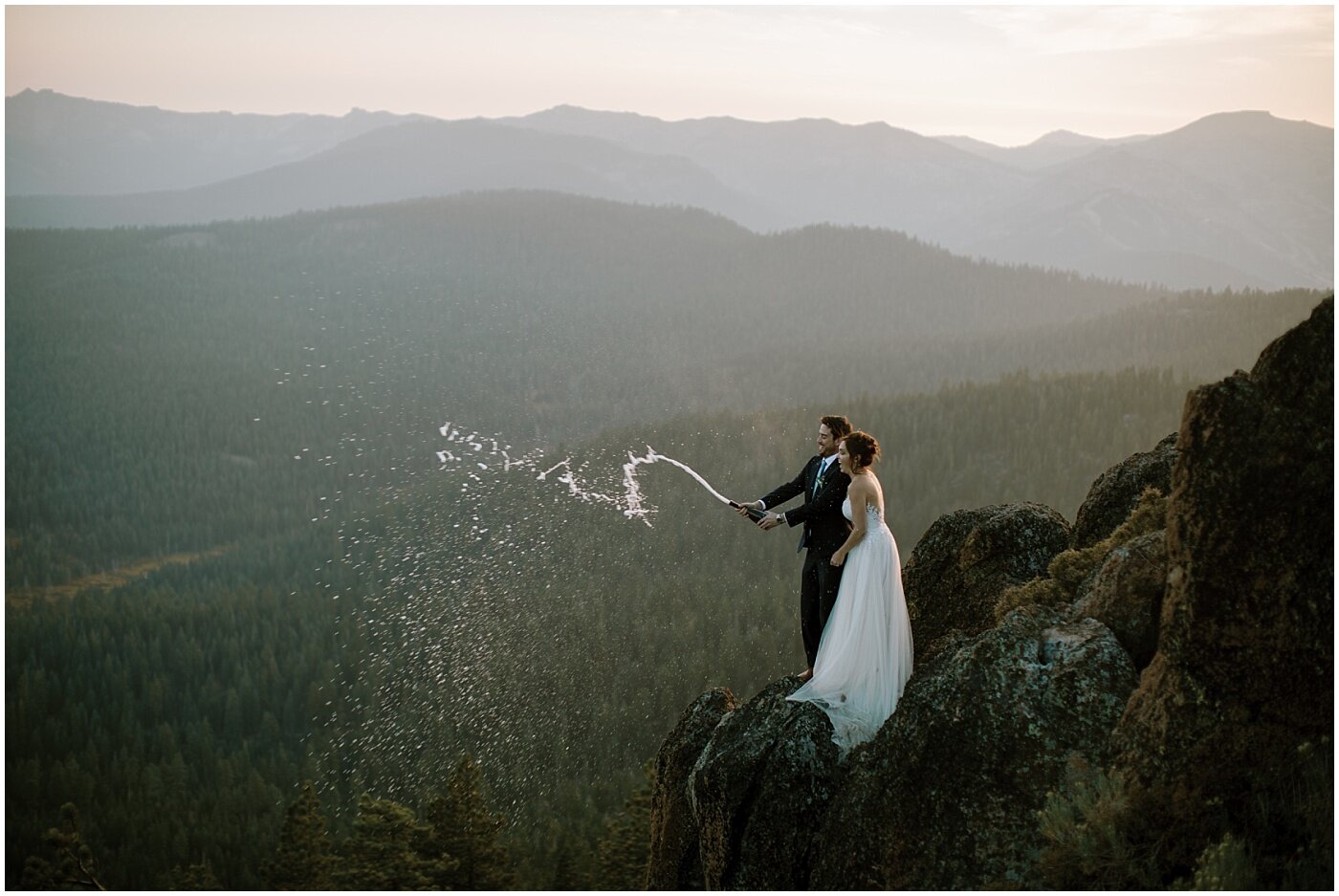
Welcome to Elopement Planning 101: a series where we’ll dive into how to plan your elopement with 8 key steps and considerations.
Each of these blog posts is also a podcast episode. You can listen to The Elopement Podcast on Apple Podcasts, Spotify, and Google Play.
How to Create a Kickass Timeline
One of the key pieces to ensuring that your elopement is one to remember (in a good way, of course!) is creating a timeline that allows for a smooth day from start to finish. While we don’t want to list out a play-by-play of every single minute, we do want to set some parameters for your day by having a general idea of what time certain events need to happen by, or where you need to be throughout the day.
As a super-involved photographer who also specializes in elopement planning, I’m deeply invested in creating a timeline that works for everyone and allows me to meet my couples’ expectations.
When I shot traditional weddings, I’d often be limited to about 10-15 minutes of “golden hour” for portraits of the couple. In some cases I’d have to pull my couples away from dinner before the sun set in order to get some portraits and give them the warm and dreamy photos they’ve been dreaming of. This is fine if you’re just working with what you’ve got and trying to fit a whole bunch of things into a traditional wedding timeline — however, if you have the ability to take a step back, set your priorities, and structure the rest of the day around them — that is ideal! I often found that we were faced with a choice on what was more important on wedding days (enjoying cocktail hour or portraits?) and instead of making a decision on the day of, the goal is to make the decision BEFORE we are faced with it.
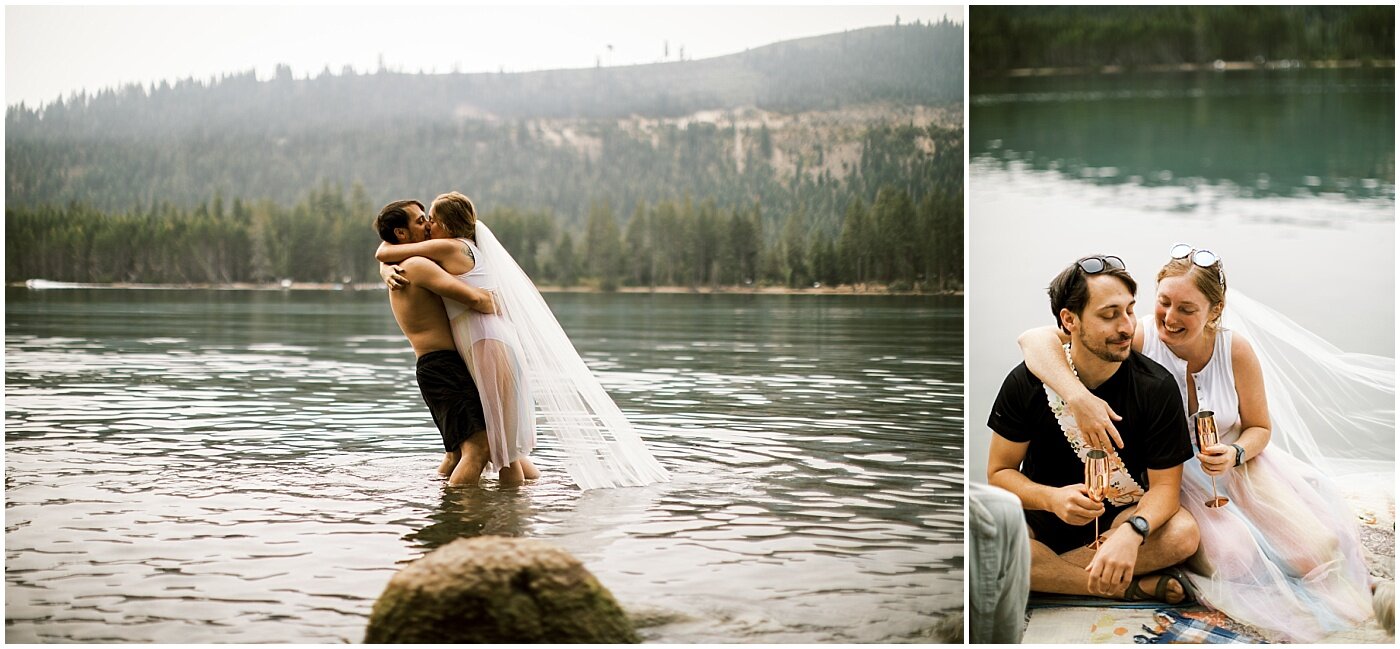
Most of the time, my couples come to me wanting epic photos with an incredible view, a stress free environment, and flexibility throughout the day. There’s often a ceremony, a family meal/mini reception, and some time for getting ready. Sometimes they opt for a first look, sometimes they don’t! Regardless, we always start with a list of intentions & priorities.
Listing out your must-have’s is the best place to start! What’s your intention for your day? Avoid stress? Have fun? See a new view? Climb a mountain? Outside of marrying your person – think of the 3 things you want most out of your wedding day.
From there, consider the amount of time you have with your photographer and the photos that are most important to you. Because the photographer is usually the largest vendor, it’s totally valid to prioritize that. My rule of thumb is to work backwards off of 15 minutes past sunset if we’re not doing any photos of the “reception” or about an hour and a half past sunset if there is a desire to document photos beyond daylight. To get the sunset time, just google “sunset, location, date” and it’ll come up! Keep this in mind for where you choose to take photos, and reference the episode all about Picking Your Date, Location, and Season from a few months ago to give you some tips.
After you’ve determined what time the sun will set on your elopement day, add 15 minutes and mark that as your end time, or the last item before you head back to your reception location. I prefer having at least an hour and a half for portraits, because the last thing we want is to feel rushed. The goal is to have a timeline that flows naturally and seamlessly. I don’t offer less than 5 hours of coverage for elopements for this very reason.
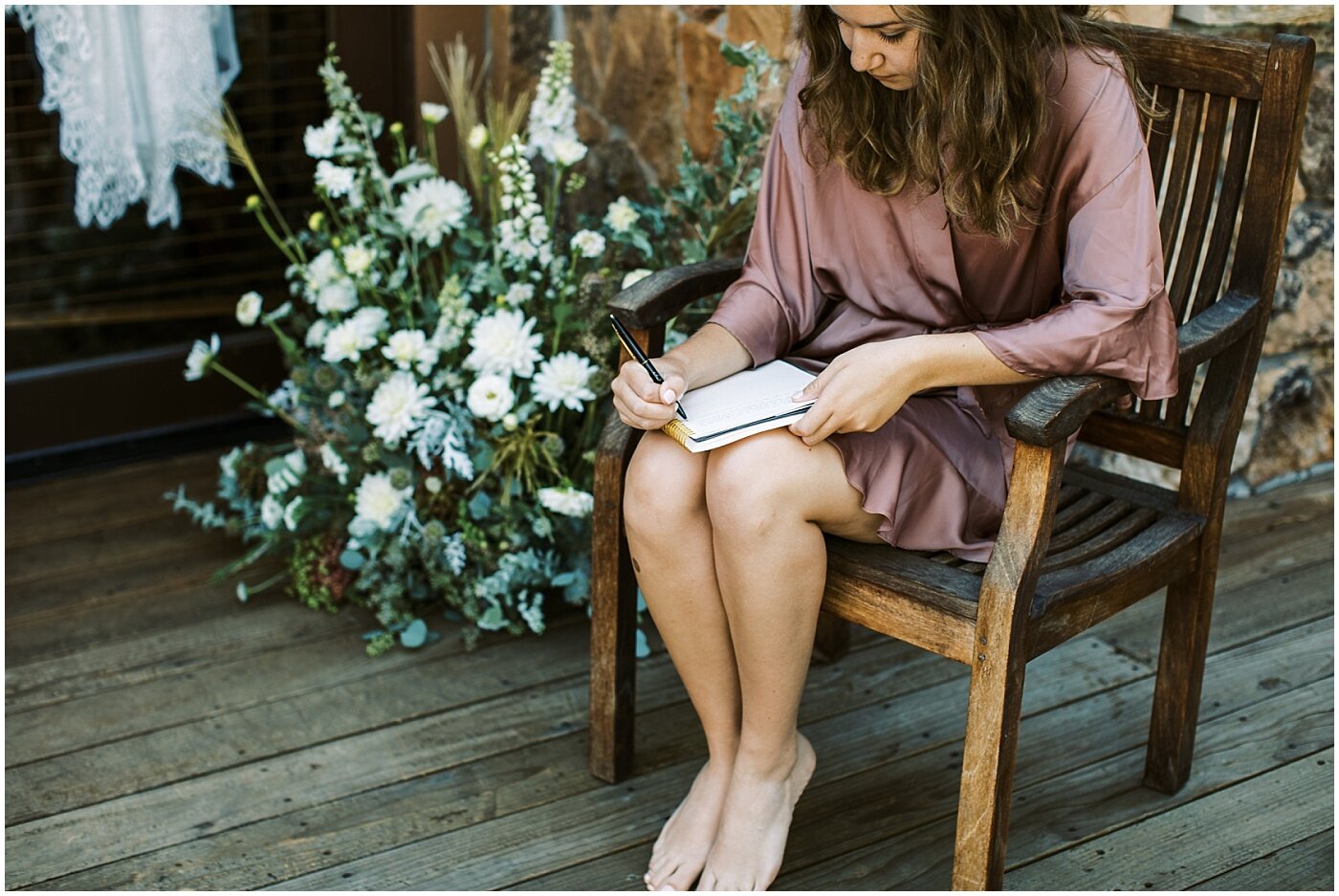
Things to account for when creating your timeline:
-
How much of your photography coverage do you want to use for your sunset portraits?
-
How long will it take to drive and hike between locations?
-
Will you be having a first look?
-
How long will your ceremony take?
-
How much time will you need to get ready?
-
Do you have plans for all day adventures or specific activities?
If you’ve chosen to elope at sunrise, you’ll need to give yourself a GOOD buffer to arrive at the location in time so you don’t miss the good light! Unlike sunset, the light gradually gets brighter (not great for photos) rather than waiting for it to get better. I had a sunrise elopement and woke up at 2:30 am in August to get my hair and makeup done, but it was worth it! I loved being able to watch the sun come up on my wedding day. Not everyone is a morning person however, which is 100% okay!
There are multiple factors that can affect your timeline such as spending time with guests, hiking, taking portraits together, slowing down and soaking in the moments, having a first look, and more. As you are building a timeline you may be faced with some tricky decisions — always revert back to the intentions you set for your wedding day, and ask yourself “is this going to change or compromise the overall vibe of our day?”
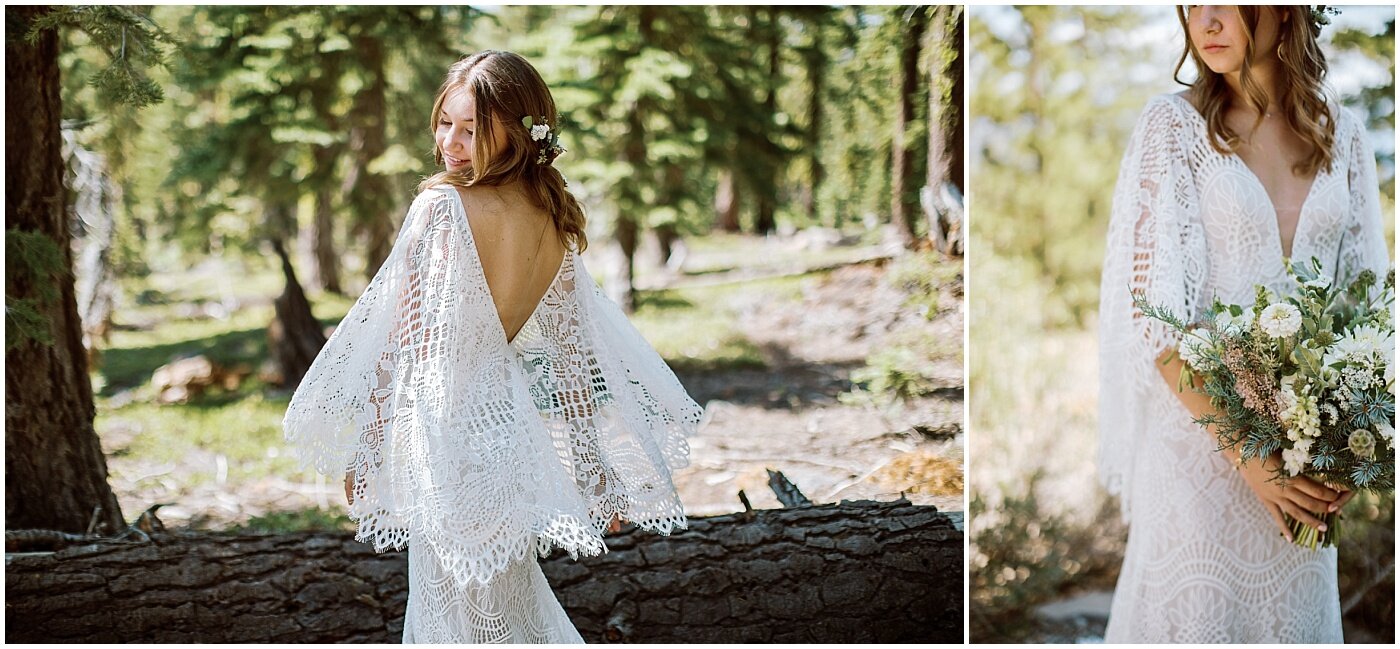
Last year, after COVID wrecked one of my couple’s guest list and they were forced to change their date, the wildfires in CA and consequential forest closures added a whole new layer to our planning. As I reworked the schedule, I kept coming back to the intentions we had set at the beginning, and that helped more than I can say — in reminding me of why we were here, what we were doing, and the purpose of it all. I knew what we were looking to accomplish, and ultimately their wedding day was incredible! The photos turned out amazing, and the experience exceeded their expectations. I attribute this to the fact that we were intentional with what they wanted for their elopement day.
I also want to mention that if you are having guests at your ceremony and don’t want to leave them to take photos, this is understandable! However, you also have the power to take a few minutes to mingle and pop some champagne with your guests. This is why it’s important to build your timeline in a way that will allow you to be intentional in the time you DO spend with your guests before dinner.
Something I like to ask my couples is: if your wedding photos were all you had to tell people what your love story looks like and how it makes you feel, what elements would you include? How would you structure the day? This is what we always come back to when planning your timeline. Creating an intentional timeline is so important for setting the tone and staying true to everything you’ve dreamed of for your wedding day.
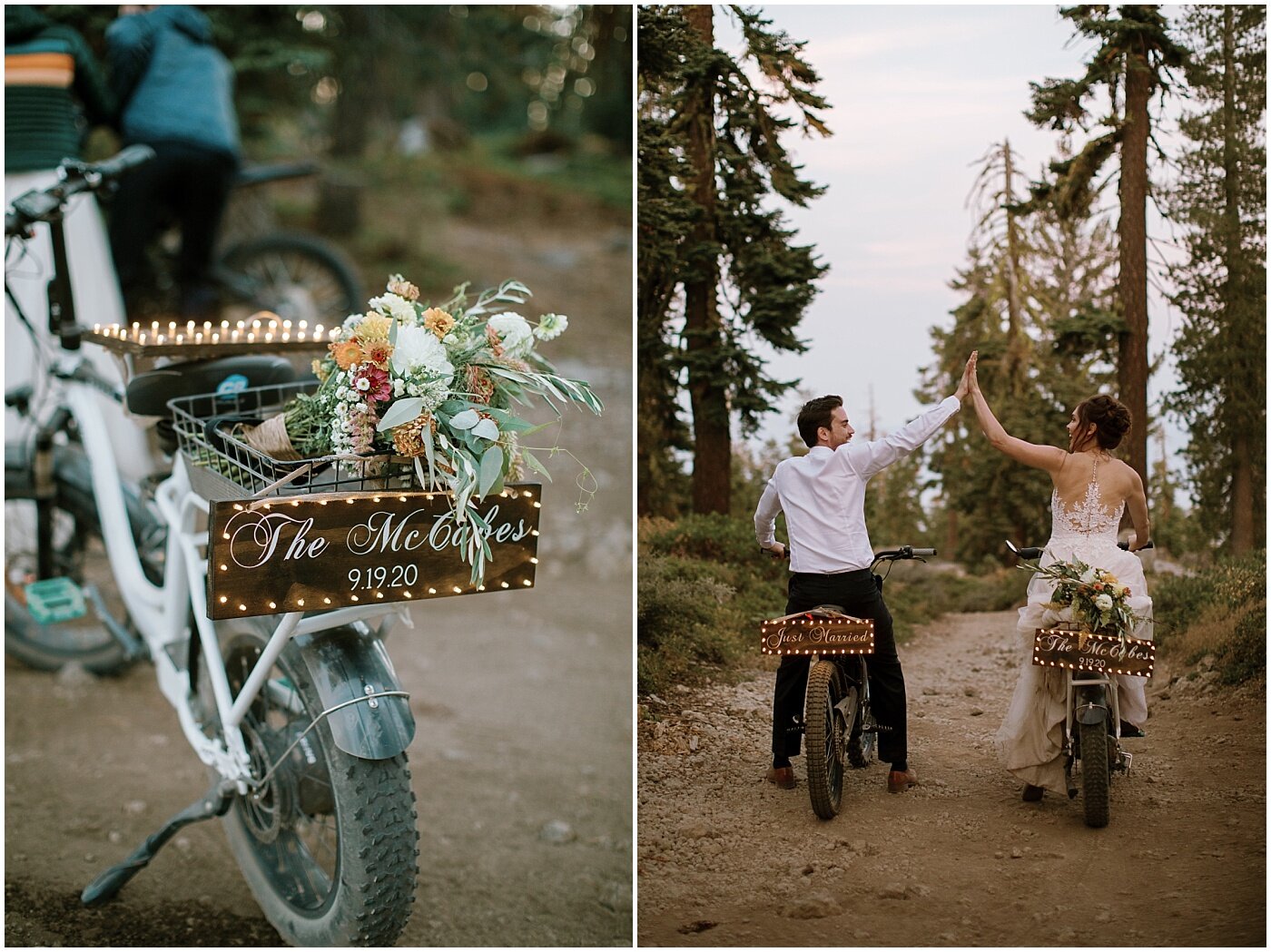
Don’t forget to check out the full Elopement Planning 101 series on the podcast, and head to the blog for more elopements, tips, and resources. Still in need of a photographer or help planning your elopement in Lake Tahoe? Reach out!